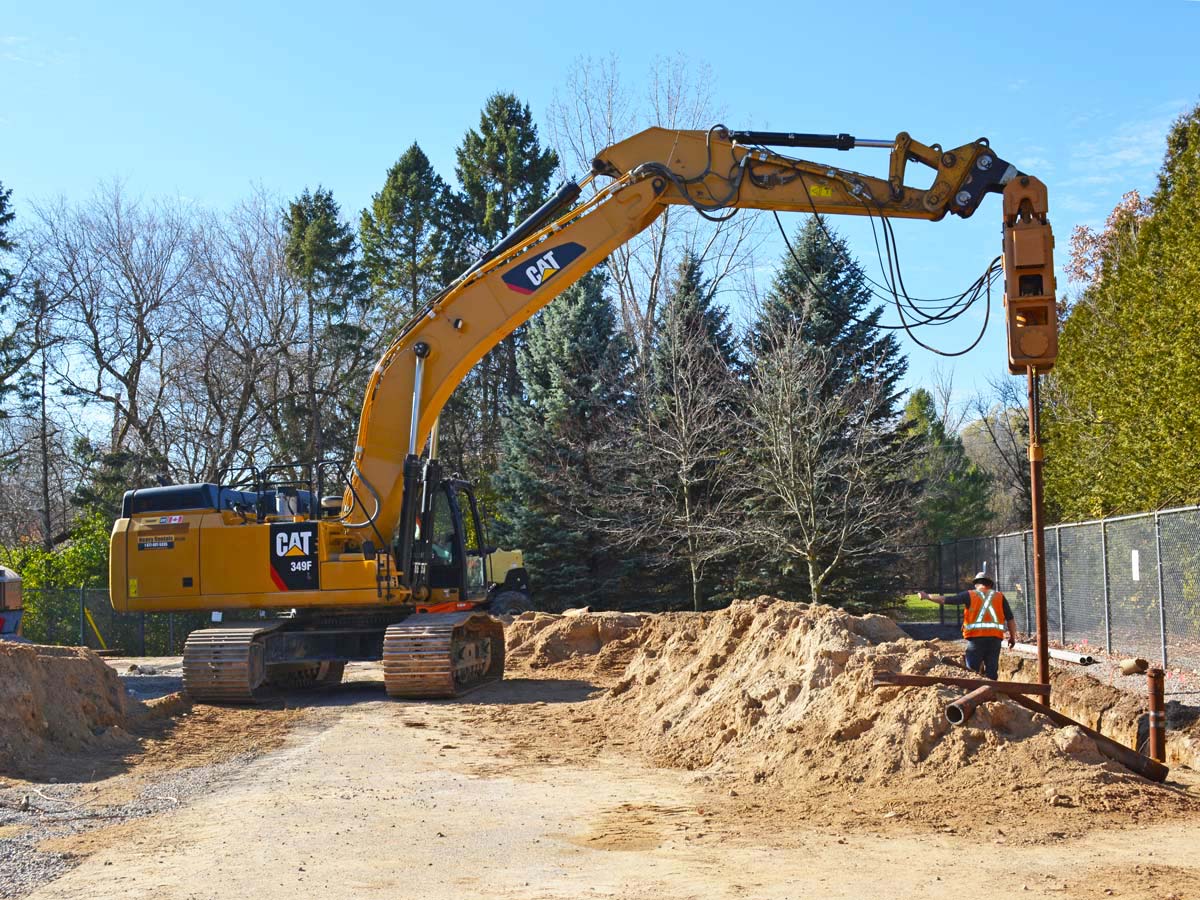Transformation through collaboration: Connections for a shared world
Innovation Issue 37: Fall 2022
Enabling wider adoption of geothermal energy technology
Partner to Innovate
Enabling wider adoption of geothermal energy technology
Professor Seth Dworkin is collaborating with Innovia GEO to create geothermal technology that could be used in low- and mid-rise buildings. Photo courtesy of Innovia GEO Corp.
Geothermal energy technology has the potential to offer environmental and financial benefits when it comes to heating and cooling buildings. One challenge, however, has been scaling down the needed infrastructure to be suitable for use in low- and mid-rise buildings, including residential homes.
Toronto Metropolitan University (TMU) engineering professor Seth Dworkin, the Canada Research Chair in High Performance Computing and Sustainable Energy, along with his team, are collaborating with industry partner Innovia GEO to develop and test an innovative geothermal heating and cooling technology that would be suitable for use in these smaller projects.
Geothermal energy technology—which includes underground heat exchangers that provide both heating and cooling—is most commonly used for large commercial buildings, as the process to install the needed systems involves drilling hundreds of feet deep, which is costly and involves heavy equipment. Professor Dworkin and Innovia GEO are changing this by creating smaller, prefabricated systems that work at much shallower depths and can be installed in buildings as small as a house. Professor Dworkin’s team provides support to the company at a demonstration site in Waterloo, Ontario, by conducting experiments and collecting data about the performance of the eight GEOPiles (the prefabricated geothermal system) installed there. The GEOPiles at the demonstration site have been operational since early 2021, and they are integrated into a type of steel pile commonly used in foundation work, which has been adapted to provide geothermal capability.
“We’ve been able to understand how to optimize performance of this type of system,” said professor Dworkin. “We’ve also verified that it works well in providing air conditioning in the summer and heating in the winter using the same system.”
The smaller size of the GEOPiles technology means it would be much easier to install, either in new home builds as part of the foundation or in retrofits where they can be placed in a building’s front lawn or driveway, enabling the potential for wider adoption of geothermal heating and cooling. Professor Dworkin explains that in addition to the dual-purpose steel piles being tested at the Waterloo site, the team is planning on an additional pilot with a durable plastic version of the piles that would only facilitate heat exchange. The plastic piles would be lighter and cost less to manufacture and install.
The experimental data has enabled the researchers to develop simulation models of the systems and then validate the models. This process means they can accurately predict how the technology would work in various scenarios. “If we know, say, exactly how much heat you can get out of these systems, we can design different types of systems for different size homes, different aged homes, quality of insulation and so on,” said professor Dworkin. He notes that there is potential for this innovative technology to be in the market as early as 2023.
Geothermal energy technology, such as the GEOPiles, offers environmental and financial benefits, including reduction in the use of electricity and natural gas during peak months in the summer and winter, which has the effect of lowering costs and emissions. Professor Dworkin is beginning to explore other possible applications, such as protecting Canada’s at-risk permafrost, which has begun to thaw due to climate change, resulting in both environmental degradation as well as damage to buildings and infrastructure. “We’ve also begun to realize that there may be potential here for melting permafrost remediation,” said professor Dworkin, adding that in locations like northern Canada, the GEOPiles could be used to pull heat out of the ground year-round to protect the permafrost while also providing a source of renewable heating for the building. He is currently in the partnership-building phase to further explore that possibility.
We’ve also begun to realize that there may be potential here for melting permafrost remediation.

Learn more about the Dworkin Research Group (opens in new window) .
Professor Dworkin’s research is supported by the Natural Sciences and Engineering Research Council of Canada and the Canada Research Chair program. The demonstration project in Waterloo was hosted by Enova Power and made possible through the financial support of the Independent Electricity System Operator Grid Innovation Fund.
